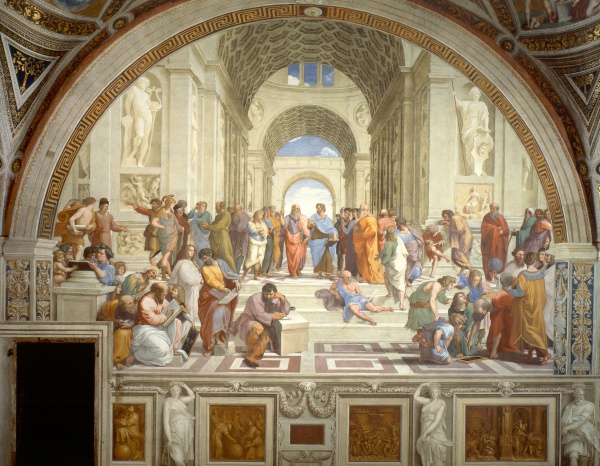Facts About The School of Athens
"The School of Athens" is a renowned fresco painted by the Italian Renaissance artist Raphael between 1509 and 1511. It was commissioned to adorn the Vatican's Apostolic Palace and resides in the Stanza della Segnatura, alongside other significant works by Raphael. This masterpiece, embodying the theme of philosophy, is celebrated for its precise use of perspective, a technique inspired by Leonardo da Vinci. The Renaissance period was marked by a revival of Ancient Greek philosophy and culture, and Leonardo's wide-ranging interests contributed to this resurgence.
At the center of the painting stand two pivotal figures: Plato and Aristotle, who personify the core of ancient Greek philosophy. Scholars have long debated the identities and interpretations of the other philosophers depicted in the fresco. The gestures of Plato and Aristotle are believed to symbolize their contrasting philosophical doctrines.
The architecture in the painting, which evokes a Greek cross, may symbolize the harmony between pagan philosophy and Christian theology. The fresco also features statues of Apollo and Athena, representing light and wisdom, respectively. Raphael's meticulous attention to detail creates a visually compelling tableau where a variety of human figures engage, each reflecting different mental states through their physical postures.
Several drawings and studies related to the fresco still exist, offering insight into Raphael's creative process. Copies and reproductions of "The School of Athens" are displayed in museums and institutions around the world, underscoring its enduring appeal and significance. The fresco's subject matter, deeply rooted in ancient Greek philosophy, finds parallels in other artworks and historical sculptures that explore similar themes.

 Ireland
Ireland